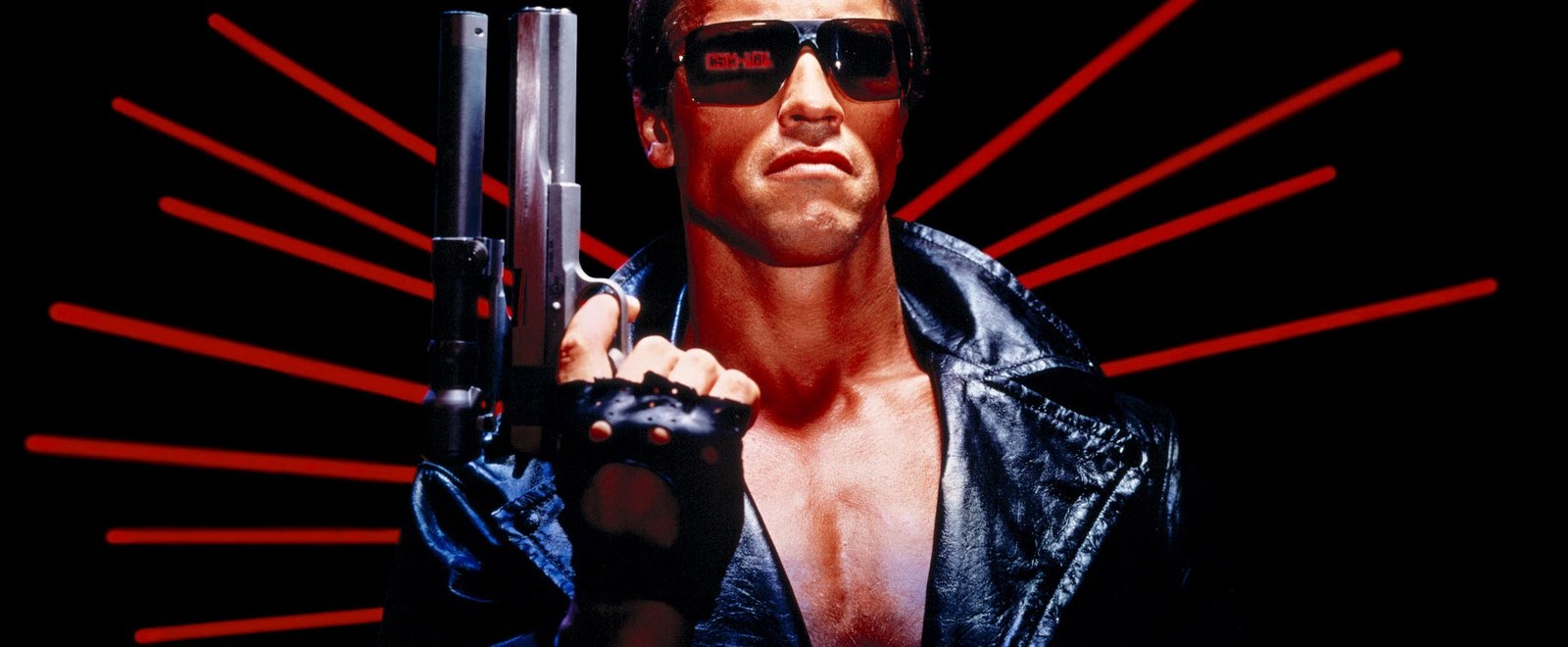In the early ’80s, James Cameron, then the director of Piranha II: The Spawning, was handed a modest sum of money to make a sci-fi actioner about a killer robot from the future. Before shooting commenced, its star, former Mr. Universe Arnold Schwarzenegger, wrote it off as “some s*it movie.” That movie, of course, was 1984’s The Terminator, and it performed better than expected, though it was still bumped from its spot at the top of the box office in only its third week, by no less than the George Burns threequel Oh God! You Devil.
Thirty-five years later, it’s the franchise that won’t die, much like Ah-nuld’s everlasting T-800. And that’s not for lack of trying: The little genre movie that could birthed a bigger and badder sequel that many believe is better, and was even for a time the most expensive motion picture ever made. Since then there have been four more big screen returns to the well, none as profitable or as game-changing. That’s to say nothing of a TV show, a lavish theme park attraction, and all that other consumer product (arcade games, action figures, trading cards, etc.) that comes with any brand worth its salt.
Are some of these latter day sequels better than the rest? Which is the series’ apex: the rickety first or the cutting edge second? And why on earth won’t it just die? As Terminator 6, a.k.a. Dark Fate, arrives, let’s consider this unusually robust franchise through some good old fashioned ranking.

1. The Terminator (1984)
Giving the top spot to the one that started it all may be a controversial choice, but it’s really like flipping a coin. Or maybe it depends on your mood: Are you up for a down-and-dirty genre picture or a super-sized blockbuster? Perhaps more crucially, do you like your Arnold mean or (relatively) nice? When he made The Terminator, the future Governator was still a monosyllabic he-man, and — 1970’s Hercules Goes Bananas aside — not exactly for kids. Twins and Kindergarten Cop were still half a decade away, and he wouldn’t reveal his yen for post-kill quips until Commando, one year later.
This may be hard to imagine now, but at the time, Arnold was still able to pass as a blood-curdling Frankenstein’s monster from the future. To moviegoers, he was either the ripped co-winner of Pumping Iron or the Teutonic übermensch of Conan the Barbarian and its goofier, less fascistic sequel. He was unknowable and he was powerful, dangerous even when good. Cameron was partially inspired by seeing John Carpenter’s original Halloween, and he turned the actor/muscleman’s T-800 into one of the era’s slasher villains — more fearsome than Jason, Freddy and Michael Myers, a Reagan-era hard body with perfect abs gone bad.
The film itself is lean and mean, with no fat. Cameron didn’t have all the money in the world, as he would by decade’s end, so its visions of the post-apocalypse are brief and murkily lit. Half of its action is relegated to car chases Cameron said were indebted to Walter Hill’s minimalist 1978 classic The Driver: visceral, precise, calmly assembled yet harrowing, all at once.
Meanwhile, Linda Hamilton’s Sarah Connor — the mother of the forthcoming human revolution against the machines her generation created — is far from the rifle-toting badass of the first sequel. She’s just an average Los Angeles single, a lousy waitress unlucky in love and utterly flustered when she discovers she’s suddenly wanted by two men: an android dead-set on icing her and a revolutionary dead-set on protecting her. Hamilton’s sweaty, raw-nerve performance in T2 is justly lauded, but she’s as strong in the original. And she’s utterly believable as an everywoman who, despite being the lone survivor, is cruelly condemned to a bleak future: She, who has no military or survivalist training, has to turn her son into a peerless rebel leader. Everyone’s life is in her hands. Try to ignore what you know will happen to her in the next film, and you’ll be devastated by that open-ended ending: her driving into a literal storm, alone and unsure how the hell she’s going to save the future.
Add to Hulu or Amazon Prime Watchlist
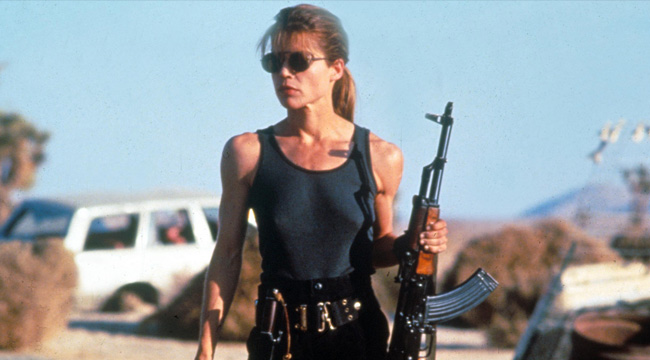
2. Terminator 2: Judgment Day (1991)
One could argue it was a punk move bringing Arnold’s T-800 back only to make a him a good guy. One could also argue it’s an inspired move, taking the series in a new and exciting direction. Still, the real reason it happened is because, for Arnold, a lot had changed. He’d crossed over into family comedies, and he’d even been named the chairman on the President’s Council on Physical Fitness and Sports. If he was going to return to the franchise that made him a lovable A-lister, he’d shoot people, but only in the legs. This time, the T-800’s many victims would live.
Either way, who’d kick T2 out of bed? Even at a then-pretty-long 137 minutes, the thing moves, one dynamic, intricate set piece following another, never slowing down once our heroes try to save the future by destroying [checks notes] an anonymous-looking office building in a corporate park — the most low-key evil place in the world.
As ever, Cameron is preachy about his big world concerns. (“If a machine, a Terminator, can learn the value of human life, maybe we can, too…”) But he’s sly with the commentary that really cuts. In the original, the villain was a Reaganite superstud — a vision of perfection mowing down the weak back when greed was good, played by a Reagan supporter. Here, the danger comes from technology, and the forces that let it thrive: the corporations who seek to profit from it, and the police and authority figures who try to protect them from those who would take them down. Of course, T2 teems with cutting edge tech; in 1991 Robert Patrick’s silver, slippery, shape-shifting T-1000 was seen as the future of CGI, which he was. But this tech is also evil, and it’s important to note he’s still defeated by the old ways — by humans who never give up, and by an obsolete model of killer robot played by an actor who by then was already well into middle age.
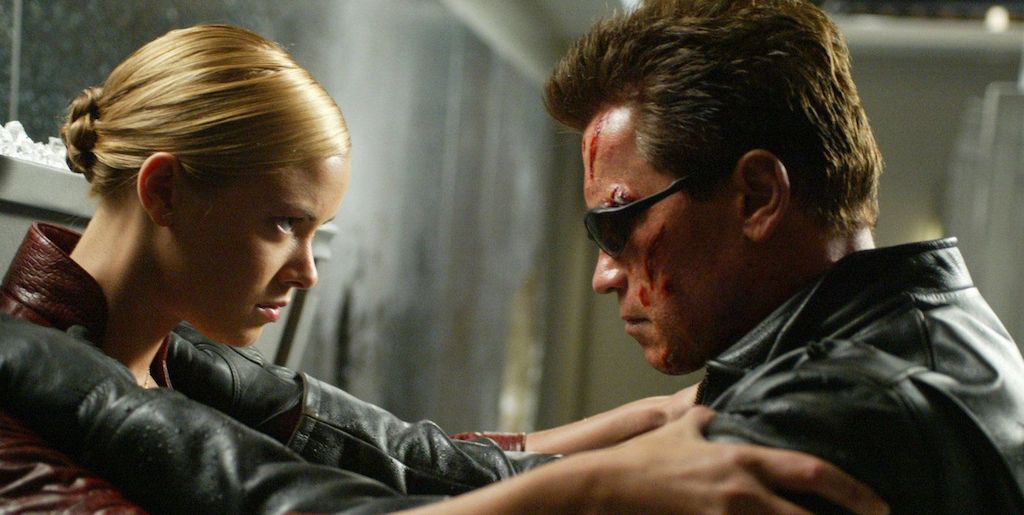
3. Terminator 3: Rise of the Machines (2003)
Terminator 2 ended on an ambiguous but optimistic note. Why ruin it? And why ruin it when the only person returning is Arnold? But for a movie that has few reasons to exist beyond the monetary, Rise of the Machines is solid stuff. Despite the elephantine budget, it’s closer to the original — a lean genre machine, crisply directed by Breakdown’s Jonathan Mostow. The only memorable things are a decent mid-film chase and a wacko Oedipal slip in which John Connor, now played by Nick Stahl, tells overqualified love interest Claire Danes, “You remind me of my mom.” But its pleasures are in its simplicity: It’s a pleasant night out at the movies, and a nice send-off to Schwarzenegger, who was about to ditch the cinema to follow his dreams of being a conservative politician ruling over liberal California, perchance never to return. If only the series had ended there.
Rent on Amazon Prime

4. Terminator: Dark Fate (2019)
James Cameron returned to his first franchise for the first time in 20-some years, as if to right a series that most believed had gone way off-track. Granted, he was only a producer and one of five credited with the story; besides, he’s a little busy with endless Avatar sequels. Maybe that explains why Terminator 6 is pretty much Terminator 2, only with some roles gender-swapped, fewer jokes (thanks, Deadpool director Tim Miller!), and no all-timer action set pieces (ditto). But don’t write it off completely. There’s a rage here that’s been absent the previous three sequels, much of it supplied by a returning Hamilton — a woman done dirty by Hollywood, who’ve barely returned her calls since around 1998, when Dark Fate begins. Her 60-something Sarah Connor is all sour sarcasm, bottomless regret, and hard liquor nights, with a bulletproof world-weariness that you can’t fake. Dark Fate may have almost certainly, finally killed the franchise dead, but Hamilton — and a rarely more soulful Arnold, as a retired/reformed T-800 rando along for the ride — almost bring it back to life.
Terminator: Dark Fate is now in theaters.
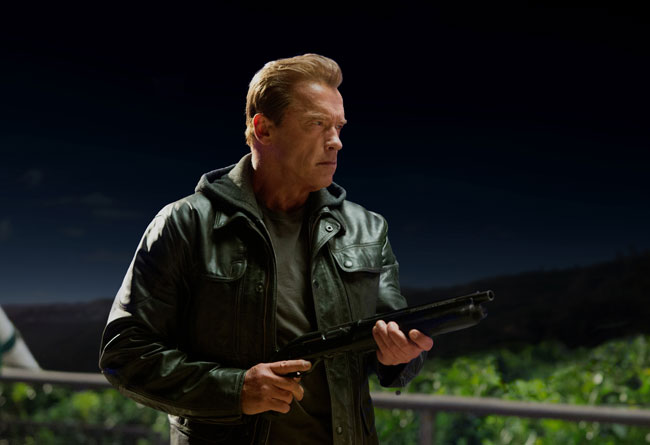
5. Terminator: Genisys (2015)
The one with the most time travel tomfoolery (and the most annoying name), it’s the Back to the Future: Part II of the series, playfully revisiting and reworking the original — letting, among other things, old and gray Arnold spar with his younger, perfect, very naked self. But it’s too busy by half, its attempts to be topical are shallow, and turning the now forty-something John Connor (Jason Clarke) bad is not the same as making the murderous T-800 good. Consider it a C+ for effort.
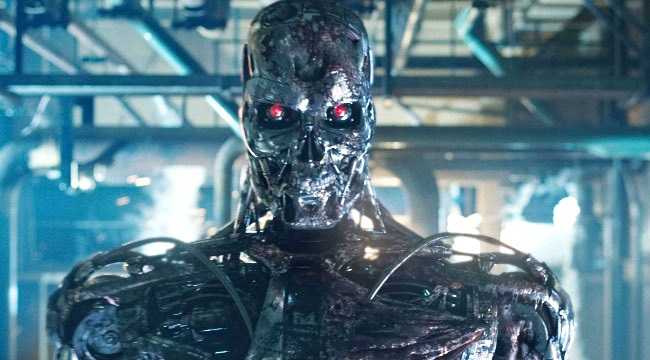
6. Terminator: Salvation (2009)
The Schwarzenegger-less fourth is the only one that spends its entirety in the post-apocalyptic future, finally really letting us see John Connor (Christian Bale) lead humanity’s survivors against the robotic hordes. It should be rousing, it should be exciting, it should at the very least be compelling. And yet it’s a humorless slog, despite being directed by McG, he of the amped-up aughts iteration of Charlie’s Angels, going completely serious. At least J.D. Salinger liked it.
Worth mentioning: T2-3D: Battle Across Time (1996)
James Cameron, Linda Hamilton, and Edward Furlong didn’t return for the third Terminator, but that doesn’t mean the team never got back together. For ages, visitors to Universal Studios in Hollywood and Florida could take in this lavish spectacle, a combination of stage and screen that ends with Arnold’s T-800 and Furlong’s teen John Connor zipping to the post-apocalypse to battle some more robots (including the “T-One Million”), all in three dimensions. (It’s still playing at Universal Studios Japan.) That stuff is serviceable and what you’d expect, but what’s actually interesting is the lengthy set-up.
The show begins as a commercial for Cyberdyne, the company that births Skynet, which unwittingly births Judgment Day. It brags about how they’re taking over not only cutting edge tech products but the military as well — that pretty soon they’ll be controlling everything, and that that should make consumers happy, not anxious. Not a lot of what the Terminator series depicted, of course, ever came true. But the notion of a future in which super-sized and short-sighted corporations own everything, and have effortlessly lulled consumers into selling over their identities and privacy and money, sure did. It’s an idea the franchise’s future sequels, from Rise of the Machines on, never meaningfully explored; they were too busy diddling with battle bots. The scariest idea in the Terminator series isn’t Android Arnold with a gun; it’s the possibility that our own Judgment Day may have already happened and we didn’t even notice it.

